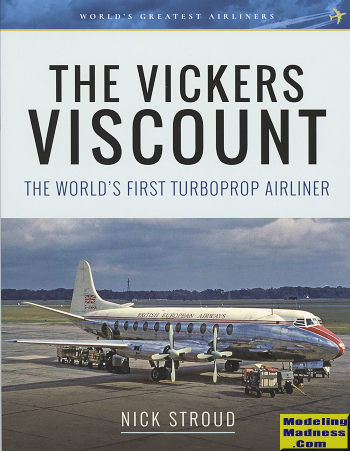 When it
was pretty obvious that WWII was going to eventually end, aircraft makers in the
US, Great Britain, and France started planning for post war commercial
airliners. Little did they realize that there would be a near glut of
ex-military types available at inexpensive prices. This was especially true of
the short and medium range aircraft as literally thousands of C-46 and C-47
aircraft were released to civilian buyers. These buyers realized that it would
eminently less expensive to get a war surplus Dakota, for instance, and re-fit
it as an airliner than to buy a new plane.
When it
was pretty obvious that WWII was going to eventually end, aircraft makers in the
US, Great Britain, and France started planning for post war commercial
airliners. Little did they realize that there would be a near glut of
ex-military types available at inexpensive prices. This was especially true of
the short and medium range aircraft as literally thousands of C-46 and C-47
aircraft were released to civilian buyers. These buyers realized that it would
eminently less expensive to get a war surplus Dakota, for instance, and re-fit
it as an airliner than to buy a new plane.
It also did not help when Europeans realized that the US
already had a major jump start with their DC-4 and Constellation aircraft which
were under development as airliners prior to the war. Indeed, the US pretty well
dominated airliner sales for thirty years or so after WWII. However, it was the
Europeans who came up with some rather innovative types and the Vickers Viscount
was one of them.
The British had put a lot of work into developing the
turboprop engine. It promised a fairly high speed with lower fuel consumption
than a straight turbojet. It also promised to be considerably quieter and
provide a smoother ride than a piston engine aircraft. Fortunately, Vickers was
near the front of this technology and was able to combine a well constructed
airframe with a fairly reliable turboprop, the Rolls-Royce Dart. Indeed the Dart
was one of those turboprop success stories as it provided ample power along with
fairly low operating costs. To top it off, it proved to be very reliable.
The end result of all this was the world's first
turboprop airliner and the best selling British airliner of all time. The type
was used by airlines the world round and even managed to make small inroads into
US civil aviation. I can recall the first time I saw one when my father took a
trip on one out of Lambert Field, St. Louis. These were the days when you could
stroll atop the concourse buildings to watch planes. I was impressed by the lack
of noise the engines made when compared to the Douglas and Lockheed piston
airliners that were the norm.
In this book, the author covers the complete development
history of the aircraft and the engine. He then covers the variants as well as
those used by various airlines and military arms. There are some tales of more
unusual flights to add some spice as well. There are a few that have survived
all these years and those are covered. Finally, a selection of liveries in full
color profiles as one simply cannot do an airliner book without lots of photos
and color, which this book does have. In all, a great look at a plane that
started the turboprop revolution in the airlines
It all makes for an excellent reference not only for the
enthusiast and the modeler. It is a book
I found particularly interesting and one that I can quite easily recommend to you.
October 2018
Review book courtesy of
Casemate Publishing, where you can order your copy of this and many other superb books
and DVDs. You can get this particular book
at this link.
If you would like your product reviewed fairly and quickly, please
contact
me or see other details in the
Note to
Contributors.
 When it
was pretty obvious that WWII was going to eventually end, aircraft makers in the
US, Great Britain, and France started planning for post war commercial
airliners. Little did they realize that there would be a near glut of
ex-military types available at inexpensive prices. This was especially true of
the short and medium range aircraft as literally thousands of C-46 and C-47
aircraft were released to civilian buyers. These buyers realized that it would
eminently less expensive to get a war surplus Dakota, for instance, and re-fit
it as an airliner than to buy a new plane.
When it
was pretty obvious that WWII was going to eventually end, aircraft makers in the
US, Great Britain, and France started planning for post war commercial
airliners. Little did they realize that there would be a near glut of
ex-military types available at inexpensive prices. This was especially true of
the short and medium range aircraft as literally thousands of C-46 and C-47
aircraft were released to civilian buyers. These buyers realized that it would
eminently less expensive to get a war surplus Dakota, for instance, and re-fit
it as an airliner than to buy a new plane.